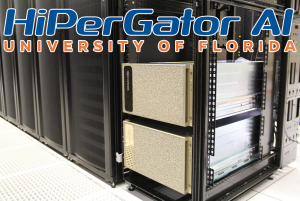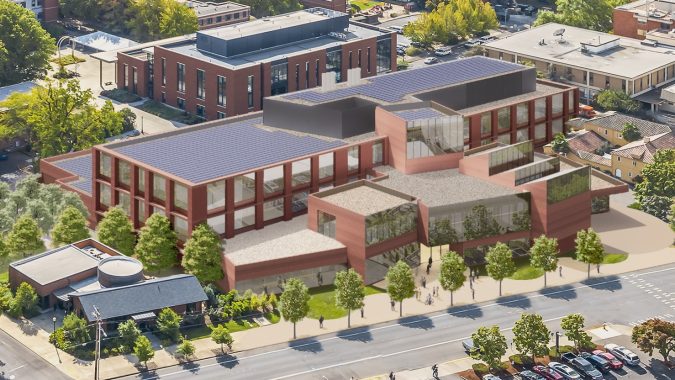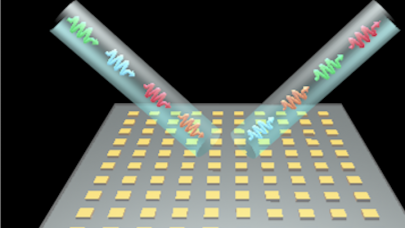Oregon State University (OSU) is planning to launch an expansive, expensive – $200 million – new research and education center. The center will be named after two OSU alums: Nvidia founder and CEO Jen-Hsun “Jensen” Huang and his wife, Lori Huang, who are donating $50 million to the OSU Foundation. The Jen-Hsun and Lori Huang Collaborative Innovation Complex (CIC) will feature a massive AI supercomputer – powered, of course, by Nvidia hardware.

The CIC, measuring some 150,000 square feet, is scheduled to open in 2025 and will include futuristic installations like a robotics and drone playground and an “extended-reality theater,” alongside more traditional functionality like labs for materials and environmental sciences. The centerpiece of the futuristic complex, though, will be an as-yet unnamed supercomputer that Nvidia says will be one of the fastest university-based systems in the world.
The system, Nvidia said, will “likely” include a mix of “about 60” Nvidia SuperPOD clusters, split between DGX SuperPODs (aimed at HPC) and OVX SuperPODs (aimed at Omniverse applications). Nvidia says that these systems will include its “next-generation CPUs, GPUs and networking[.]” Nvidia’s current product raft includes its H100 “Hopper” GPU and associated systems, BlueField DPUs, and its Nvidia Quantum-2 InfiniBand (400Gbps) platform. Next year, Nvidia is slated to begin shipping systems based on its Grace Arm CPU.
OSU and Nvidia say that the water used to cool the system will help heat more than 500,000 square feet of building space on OSU’s Corvallis campus, where the CIC will be located. The partners added that the supercomputer will help to accelerate AI, simulation and digital twins on campus, complementing the physical labs.
“AI is the most transformative technology of our time,” said Jensen and Lori Huang. “To harness this force, engineering students need access to a supercomputer, a time machine, to accelerate their research. This new AI supercomputer will enable OSU students and researchers to make very important advances in climate science, oceanography, materials science, robotics, and other fields.”
With $50 million of the $200 million cost taken care of by the Huangs, OSU will be requesting $75 million in matching funds from the Oregon legislature, along with additional support from philanthropists and the public and private sectors.
“The Jen-Hsun and Lori Huang Collaborative Innovation Complex and supercomputer will help OSU be recognized as one of the world’s leading universities for artificial intelligence and robotics,” said Scott Ashford, dean of OSU’s College of Engineering. “It will transform not only the College of Engineering, but the entire university, and have an economic and environmental impact on the state of Oregon and the nation.”

Nvidia recently made headlines for a similar effort: the HiPerGator AI supercomputer. HiPerGator AI was also made possible by a major donation from an Nvidia cofounder and alum of the host university: Chris Malachowsky, an alum of the University of Florida. HiPerGator AI, which weighs in at 17.2 Linpack petaflops, ranked 34th on the most recent Top500 list and, perhaps more impressively, 11th on the Green500 list at 29.92 gigaflops per watt.
On the other hand: still no update on the Arm- and Nvidia-based supercomputer that Nvidia announced that it would deploy at the University of Cambridge. Nvidia pitched the system – which was announced in September 2020 amid Nvidia’s unsuccessful effort to purchase Arm – as a “world-class AI laboratory” and “a Hadron collider or Hubble telescope … for artificial intelligence.”
Header image: an artist’s rendering of the CIC. Image courtesy of Nvidia.


























































